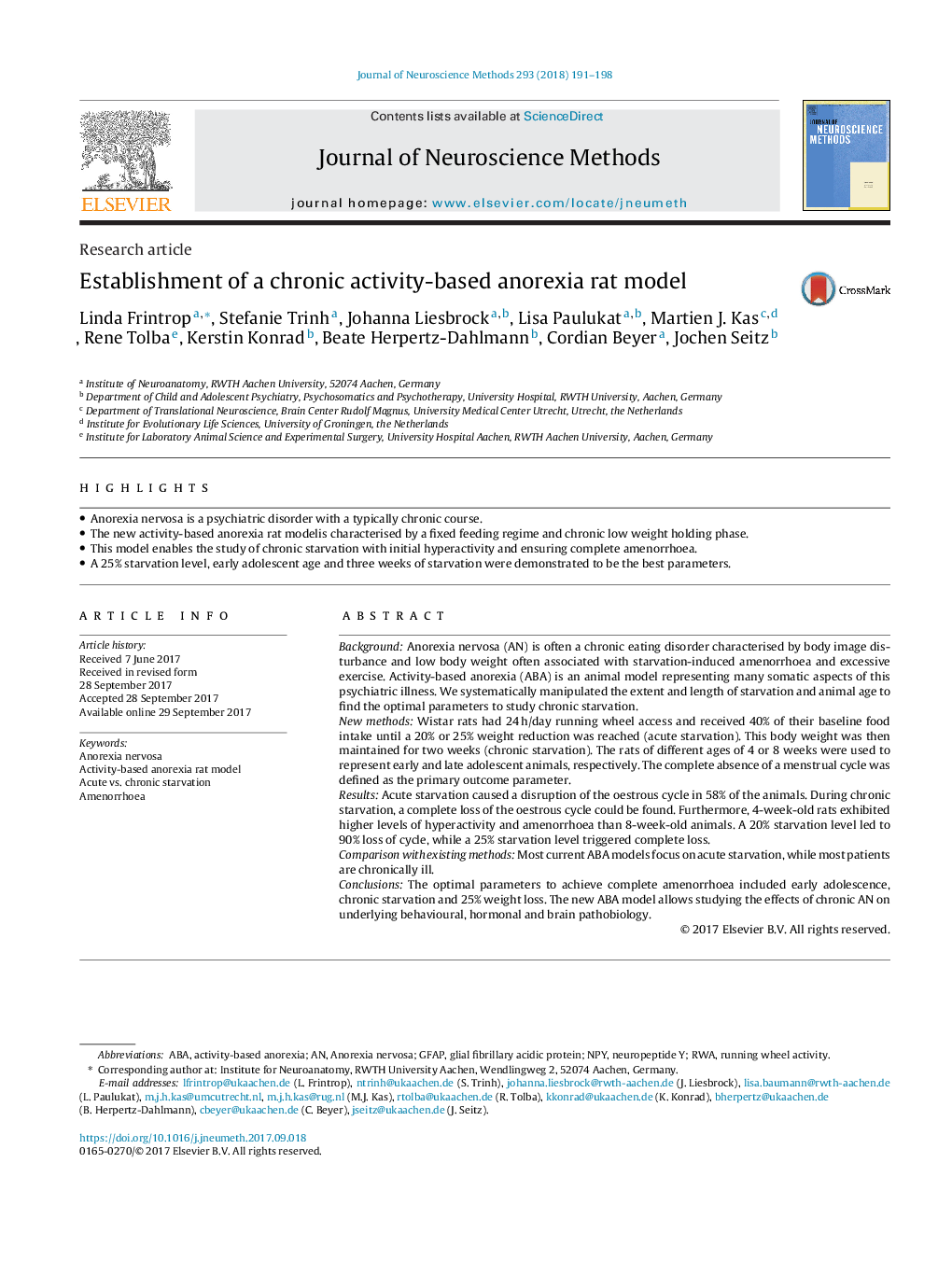| Article ID | Journal | Published Year | Pages | File Type |
|---|---|---|---|---|
| 5737113 | Journal of Neuroscience Methods | 2018 | 8 Pages |
â¢Anorexia nervosa is a psychiatric disorder with a typically chronic course.â¢The new activity-based anorexia rat modelis characterised by a fixed feeding regime and chronic low weight holding phase.â¢This model enables the study of chronic starvation with initial hyperactivity and ensuring complete amenorrhoea.â¢A 25% starvation level, early adolescent age and three weeks of starvation were demonstrated to be the best parameters.
BackgroundAnorexia nervosa (AN) is often a chronic eating disorder characterised by body image disturbance and low body weight often associated with starvation-induced amenorrhoea and excessive exercise. Activity-based anorexia (ABA) is an animal model representing many somatic aspects of this psychiatric illness. We systematically manipulated the extent and length of starvation and animal age to find the optimal parameters to study chronic starvation.New methodsWistar rats had 24Â h/day running wheel access and received 40% of their baseline food intake until a 20% or 25% weight reduction was reached (acute starvation). This body weight was then maintained for two weeks (chronic starvation). The rats of different ages of 4 or 8 weeks were used to represent early and late adolescent animals, respectively. The complete absence of a menstrual cycle was defined as the primary outcome parameter.ResultsAcute starvation caused a disruption of the oestrous cycle in 58% of the animals. During chronic starvation, a complete loss of the oestrous cycle could be found. Furthermore, 4-week-old rats exhibited higher levels of hyperactivity and amenorrhoea than 8-week-old animals. A 20% starvation level led to 90% loss of cycle, while a 25% starvation level triggered complete loss.Comparison with existing methodsMost current ABA models focus on acute starvation, while most patients are chronically ill.ConclusionsThe optimal parameters to achieve complete amenorrhoea included early adolescence, chronic starvation and 25% weight loss. The new ABA model allows studying the effects of chronic AN on underlying behavioural, hormonal and brain pathobiology.
